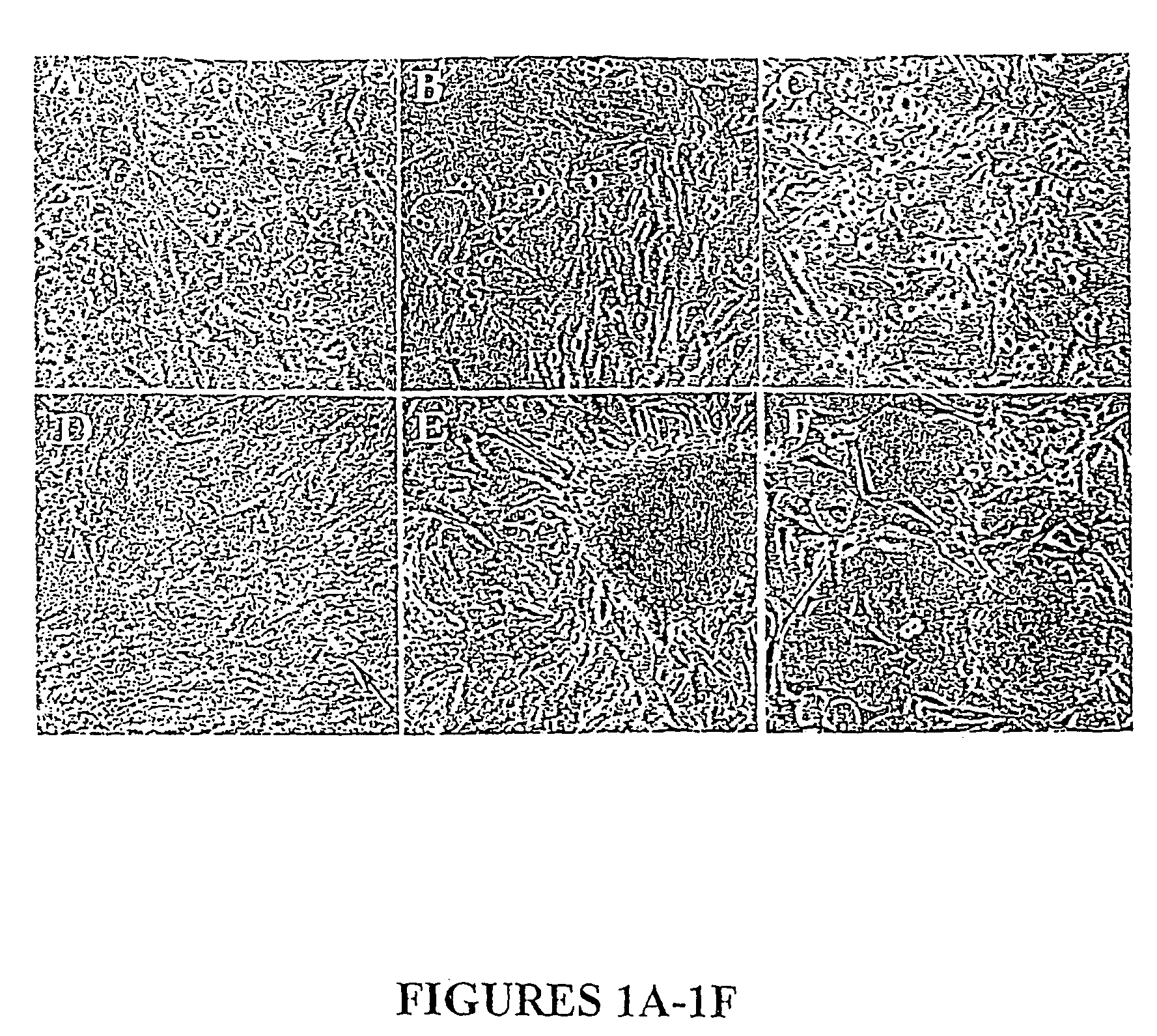Pancreatic cancer associated antigen, antibody thereto, and diagnostic and treatment methods
a pancreatic cancer and associated antigen technology, applied in the field of pancreatic cancer associated antigen, antibody thereto, diagnostic and treatment methods, can solve the problem of false positive elevation in common non-neoplastics
- Summary
- Abstract
- Description
- Claims
- Application Information
AI Technical Summary
Benefits of technology
Problems solved by technology
Method used
Image
Examples
example 1
Development of Cell Line BMRPA.430.NNK (BMRPA1.NNK) through Neoplastic Transformation of Pancreatic Cell Line BMRPA.430
Materials:
[0086] 1640 RPMI medium, penicillin-streptomycin stock solution (10,000U / 10,000 mg / mL)(P / S), N-2-hydroxyethylpiperazine-N′-2-ethanesulfonic acid (HEPES) buffer, 0.2% Trypsin with 2 mM Ethylene diamine tetraacetic acid (Trypsin-EDTA), and Trypan blue were all from GIBCO (New York). Fetal bovine serum (FBS) was from Atlanta Biologicals (Atlanta, Ga.). Dulbecco's Phosphate Buffered Saline without Ca2+ and Mg2+ (PBS), and all trace elements for the complete medium were purchased from Sigma Chemical Company (ST. Louis, Mo.). Tissue culture flasks (TCFs) were from Falcon- Becton Dickinson (Mountain View, Calif.), tissue culture dishes (TCDs) were obtained from Corning (Corning, N.Y.), 24-well tissue culture plates (TCP), and 96-well TCP were from Costar (Cambridge, Mass.). Filters (0.22, 0.45 μm) were from Nalgene (Rochester, N.Y.).
Preparation of Complex RP...
example 2
Results
[0098] Effects of NNK oil BMRPA1 morphology: Repeated exposures to NNK and other nitrosamines have been observed to induce both cytotoxic and neoplastic morphological alterations in a variety of rodent and human in vitro experimental models of pancreatic cancer (Jones, 1981, Parsa, 1985, Curphey, 1987, Baskaran et al. 1994). With the purpose of determining whether such changes are induced by a single exposure to NNK and at relatively small NNK concentrations, BMRPA1 cells were exposed for one 16 hour period to serum free medium containing 100, 50, 10, 5, and 1 μg NNK / mL. As observed in previous studies with pancreatic cells, the larger concentrations of NNK resulted in cytotoxic changes consisting of poorly attached, degenerating, dying cells, and slowed cell growth, while such changes were observed considerably less in cells exposed to 5, and 1 μg NNK / mL. The degenerative changes of the treatment with 100, 50, 10 μg NNK / ml were followed within a week by the appearance of ph...
example 3
Tolerance-induced Targeted Antibody Production (TITAP)
Materials and Methods:
[0111] Materials: RPMI 1640, DMEM containing 5.5 mM glucose (DMEM-G+), penicillin-streptomrycin, HEPES buffer, 0.2% trypsin with 2 mM EDTA, Bovine serum albumin (BSA), Goat serum, and Trypan blue were from GEBCO (New York). Fetal bovine serum (FBS) was from Atlanta Biologicals (Atlanta, Ga.). Hypoxanthine (H), Aminopterin (A), and Thymidine (T) for selective HAT and HT media and PEG 1500 were purchased from Boehringer Mannheim (Germany). Diaminobenzidine (DAB) was from BioGenex (Dublin, Calif.). PBS and Horseradish peroxidase labeled goat anti-Mouse IgG [F(ab′)2 HRP-GαM IgG] were obtained from Cappel Laboratories (Cochranville, Pa.). Aprotinin, pepstatin, PMSF, sodium deoxycholate, iodoacetamide, paraformaldehyde, Triton X-100, Trizma base, OPD, HRP-GαM IgG, and all trace elements for the complete medium were purchased from Sigma (ST. Louis, Mo.). Ammonium persulfate, Sodium Dodecyl Sulfate (SDS), Dithiot...
PUM
| Property | Measurement | Unit |
|---|---|---|
| molecular weight | aaaaa | aaaaa |
| molecular weight | aaaaa | aaaaa |
| median survival time | aaaaa | aaaaa |
Abstract
Description
Claims
Application Information
 Login to View More
Login to View More - R&D
- Intellectual Property
- Life Sciences
- Materials
- Tech Scout
- Unparalleled Data Quality
- Higher Quality Content
- 60% Fewer Hallucinations
Browse by: Latest US Patents, China's latest patents, Technical Efficacy Thesaurus, Application Domain, Technology Topic, Popular Technical Reports.
© 2025 PatSnap. All rights reserved.Legal|Privacy policy|Modern Slavery Act Transparency Statement|Sitemap|About US| Contact US: help@patsnap.com



